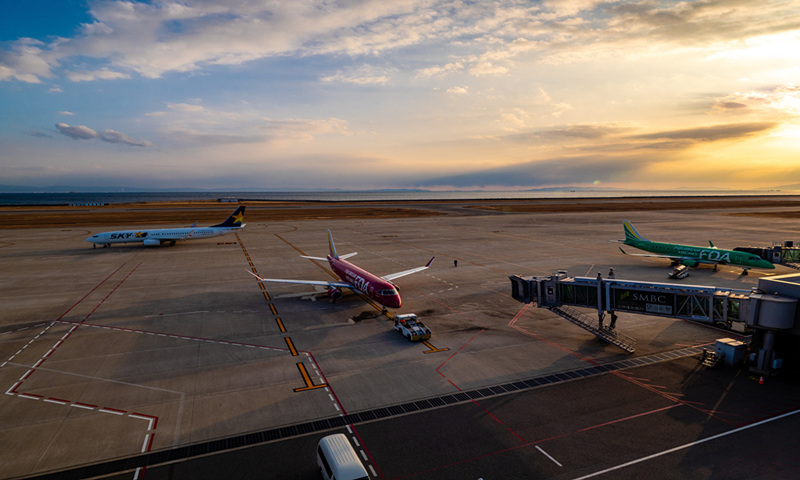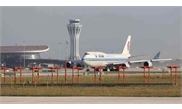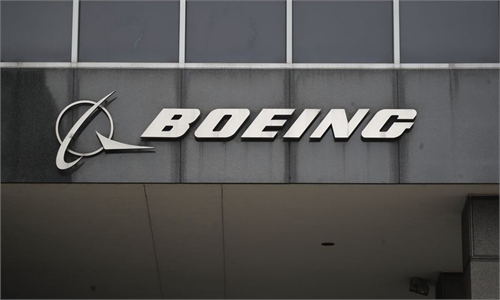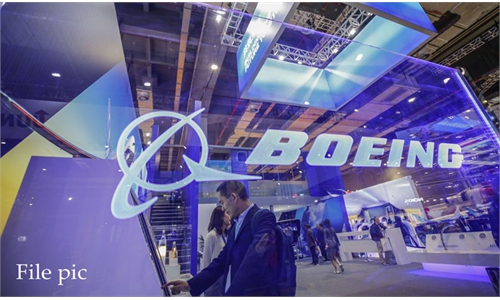Boeing slashes jet output, eyes factory shake-up as COVID-19 hammers sales
Aviation industry continues rocky flight

Aircraft on the tarmac at Kobe Airport, Japan Photo: VCG
Boeing Co slashed production of its biggest twin-engine jets, delayed its new 777X by up to a year and began sunsetting the iconic 747 as it posted a bigger-than-expected quarterly loss dominated by the COVID-19 pandemic on Wednesday.
The cuts mark the industry's latest effort to tackle a crisis that has decimated demand for air travel, with oversupplied wide-body models like the 787 Dreamliner and 777 plunging deeper into an existing downturn.
Boeing also remains exposed to tensions between the US and China, which has shelved plans to buy big US jets.
"Our industry and our company are weathering challenges like none we have ever experienced in our lifetimes," Chief Executive Dave Calhoun told analysts.
Boeing said it would cut its 787 output to six a month in 2021 - down from a previous goal of seven and the third such cut since a year ago when output touched a record 14 a month.
It also plans to cut its combined output of the 777 mini-jumbo and its new 777X sister model to two a month in 2021 from a previous goal of three, while delaying the 777X entry to service by a year to 2022, confirming a Reuters report.
Boeing shares fell 3 percent partly on the lower production, though analysts said it had managed to contain its cash burn, a central concern for investors.
Boeing lost an adjusted $4.79 per share, against average estimates of a loss of $2.54, according to Refinitiv IBES data.
The commercial airplanes unit was hit by $468 million in severance expenses related to plans to cut 19,000 jobs of its roughly 160,000-strong workforce, and Boeing warned deeper cuts were possible.
"We'll have to further assess the size of our workforce," Calhoun told employees.
The financial impact of the health crisis has compounded the safety grounding of Boeing's narrow-body 737 MAX 16 months ago.
Calhoun told analysts MAX deliveries would resume in the fourth quarter, a fresh delay of several weeks that raises the prospect that its US return to service could slip into 2021.
Boeing also slowed plans to lift battered MAX production by pushing its target of 31 jets a month into 2022 from 2021.
"We still see a path to positive cash flow in 2021," CFO Greg Smith added, noting it would take a year after MAX deliveries begin to clear a backlog of around 450 parked jets.
In a further shake-up, Calhoun said Boeing was looking at whether to consolidate 787 production in one location as it cuts output.
It splits production on the 787 Dreamliner between Everett, Washington, and North Charleston, South Carolina.
That raises questions over the future of the Everett hub because the largest 787-10 can only be built in South Carolina.
Smith said Boeing would be able to return to a rate of 10-11 787s monthly at some point.
Calhoun said it was too early to predict the outcome of the study, part of a wider industrial reassessment.
The wide-body production cuts reflect fears that it could take until 2023 for air traffic to return to normal levels. Long-range routes - served by bigger jets like the Boeing 787 and Airbus A35 - have been hit harder than short hops.
Industry sources said Boeing's production cuts would put pressure on Airbus to further cut its own wide-body production. Airbus declined comment ahead of earnings on Thursday.
Boeing also confirmed the last of its legendary 747s would roll out of the factory in 2022.
The easily spotted hump-topped jumbo had democratized global air travel in the 1970s and was a favorite of presidents and potentates, before it fell behind modern twin-jets.
The coronavirus pandemic has added to the pain.
Rolls-Royce is planning a share issue to raise up to 1.5 billion pounds ($1.9 billion) to plug a capital shortfall as a slow recovery in demand for air travel threatens the aviation industry, Reuters reported on Wednesday.
The British aerospace engineer is expected to pursue a rights issue with new shares offered to existing investors at a discount to the market price, they said.
Rolls-Royce, which makes engines for the Boeing 787 and Airbus 350, said it would burn through 3 billion pounds in the first half of the year as hours flown by its engines halved due to the COVID-19 pandemic.
The company, with most of its revenues coming from airlines paying it for engine flying hours, expects a further 1 billion-pound outflow in the second half of 2020.
General Electric Co reported $2.18 billion in quarterly losses on Wednesday, hurt by weakness in its aviation and power units due to the COVID-19 pandemic, but its free cash outflow came in better than expected.



